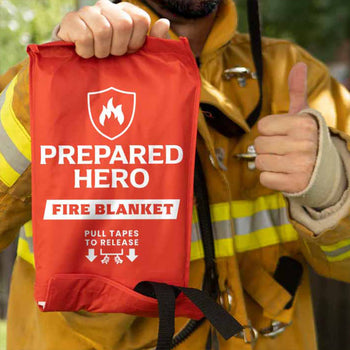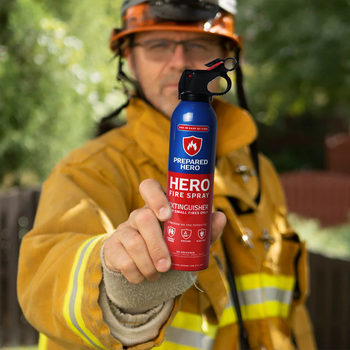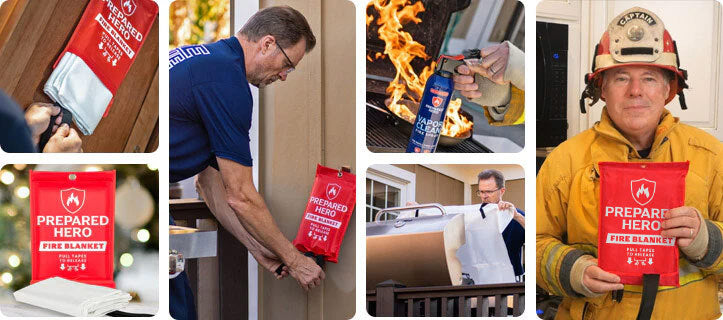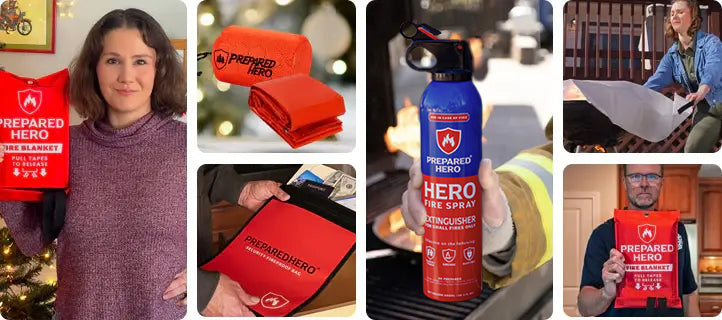Where you put your smoke detectors matters just as much as installing them. Proper placement makes sure they can detect...
Emergencies can happen anytime, and when they do, having a plan makes a huge difference. An emergency action plan (EAP) helps everyone know exactly what to do, where to go, and who’s in charge. It’s not just about evacuating quickly. It’s about doing it safely and with a clear process.
Whether you’re dealing with a fire, flood, earthquake, or another crisis, having a solid plan keeps everyone safe. In this guide, we’ll talk about everything you need to know about emergency action plans, including their benefits, what to include, and who to train.
What Should an Emergency Action Plan Include?

Creating an emergency action plan doesn’t have to be complicated. The OSHA (Occupational Safety and Health Administration) outlines everything you should include. Here they are:
1. How to Report an Emergency
An emergency action plan should show employees exactly how to report an emergency. You shouldn’t guess or skip this step. Whether it’s calling 911, using a fire alarm pull station, or using an internal emergency number, everyone needs to know how to report an emergency.
If your workplace uses internal phones, the emergency numbers should be posted near them. You can also use intercoms or coded messages to warn the entire building. It’s fine as long as everyone understands how to use it and what each code means.
Plus, the goal is simple: to avoid wasting time. Emergencies like electrical fires or chemical spills escalate fast. Seconds matter, so train your team on how to act immediately. The delay puts everyone at risk when people are confused about who to call or what fire alarm to use.
2. How to Evacuate
People should also know exactly how to evacuate the building. This means your emergency action plan must clearly outline evacuation procedures and exit routes. It should also determine who gives the evacuation order and when.
Add floor diagrams if you can. These should show emergency exits, assembly points, and emergency gear like fire blankets, fire sprays, and flame shields. Post them around the building, especially in common areas.
You should also determine who helps guests get out. Make sure your escape routes are clear, wide enough, and well-marked. If you only have one exit, make sure it’s safe for everyone to use during an emergency.
In addition, your plan should cover when to shelter-in-place instead of evacuating. Not every emergency means running outside. For example, staying inside during a toxic spill outside the building might be safer than going out.
3. Who Stays Behind
Not everyone might leave the building immediately. In some places, a few trained employees stay back for a short time to shut down machines, turn off gas lines, handle critical systems, and follow the RACE protocol. This has to be part of your emergency action plan.
Don’t leave things up to chance. If some people need to stay behind, your plan should outline who they are and what they’re responsible for. Their tasks should also be safe and quick to do.
Smaller businesses usually evacuate everyone at once. However, if anyone is staying behind, make sure they know when to stop and get out. Their safety comes first.
You should also make sure employees know where the shut-off points are for things like electricity, gas, or water. The goal is to prevent damage and keep first responders safe.
4. How to Account for Everyone
You need to know if everyone made it out after the evacuation. This is where headcounts and roll calls come in. You should also have designated meeting spots where people gather after evacuating.
Choose assembly areas that are safe and out of the emergency crew’s way. For instance, if there’s smoke or chemicals involved, your assembly spot outside should be upwind from the building. Inside areas, like stairwells or refuge rooms, should be large enough to fit your team safely if they can’t go outside right away.
You should also designate someone (usually an evacuation warden or supervisor) to check the rooms before leaving. They’ll also do a headcount and take note of anyone missing at the assembly areas. That information then gets passed to the emergency coordinator.
In addition, you need to track people who aren’t employees, like vendors or customers. Don’t forget to plan for what happens if people need to evacuate a second time (e.g., when the structure fire gets bigger).
5. Rescue and Medical Duties
Does your company have trained first-aid responders or rescue teams? If yes, your emergency action plan should determine who they are and what they do. Are they going to help evacuate people? Provide CPR? Or guide fire responders through the building? Don’t leave these details vague.
If your workplace doesn’t have first-aid responders or rescue teams, you can say that local emergency services will take care of medical and rescue duties.
You also have to coordinate with local firefighters and paramedics if you’re counting on them. Make sure they know the layout of your building and risky areas, like server rooms or flammable storage areas.
Another heads-up: if you’re in a business that deals with hazardous materials or risky equipment, you need more advanced planning. This includes fire safety training, drills, and extra safety gear.
6. Who to Contact
Last but not least, your emergency action plan has to include contact information. List down the names or job titles of people who can answer questions about the plan or explain what to do in certain situations.
Don’t bury this in a handbook or email. Make it visible. Post the contacts near exits, break rooms, and common areas: anywhere people are likely to look if they’re unsure.
It’s also smart to have multiple contacts in case someone’s out sick or unavailable. Make sure your team knows who to ask if they have questions about the EAP.
An EAP keeps your team safe, helps your business stay compliant, and proves you're prepared. It’s not just paperwork. It’s peace of mind when it matters most.
Benefits of an Emergency Action Plan

An emergency action plan has many benefits. From keeping people safe to helping your business stay compliant, here are the top benefits of an emergency action plan:
1. Keeps Everyone Safe
An emergency action plan outlines what to do during fires, floods, power outages, or medical emergencies. People stay calm and act fast when they know exactly what to do. It also decreases the chances of injuries or someone getting left behind. Safety comes first when everyone’s on the same page.
2. Helps With Compliance
Most workplaces are legally required to have an EAP under OSHA guidelines. You could face fines and other sanctions if you don’t have one. But more than that, it shows your employees that you care about their well-being. Following the rules builds trust and keeps your business in good standing. It’s a smart and responsible move.
3. Speeds Up Response Time
Every second counts during an emergency. An emergency action plan outlines who’s in charge, how to evacuate, and how to call for help. This makes it easier for people to react fast without guessing what to do. It also helps avoid delays that can cause more harm.
4. Reduces Confusion
Panic spreads when no one knows what to do. An emergency plan keeps things organized so people don’t freeze or run in different directions. Everyone knows their role, where to go, and how to check if anyone’s missing. It brings order when things feel out of control.
5. Minimizes Damage and Downtime
The faster you act, the less damage there is. A strong plan helps prevent fire, flood, and other hazards from causing more damage. This means fewer repairs, lower expenses, and less time employees are out of work. Your business can also bounce back faster.
What Are the Five Steps of the Emergency Action Plan?

Having a solid plan can change the outcome when emergencies hit. An emergency action plan usually follows five steps to help you stay prepared, act quickly, and bounce back. Here they are:
1. Prevention
The best way to deal with emergencies is to prevent them. While we can’t predict what’s going to happen, smart planning cuts down risks.
Prevention is your first layer of defense. It usually includes setting evacuation routes, smart building layouts, and ways to reduce hazards.
2. Mitigation
Mitigation is about limiting the impacts when something does go wrong. This could mean enforcing building rules, determining where flooding might happen, or keeping flammable items away from homes. You can’t always stop an emergency, but you can make sure it causes less harm.
3. Preparedness
Being ready isn’t a one-time thing. It’s an ongoing effort that includes doing drills, training your team, and making sure everyone knows what to do. The better prepared you are, the less confusion there’ll be if something bad happens.
4. Response
This part kicks in when an emergency hits. It’s all about quick action, like getting people to safety, treating injuries, and keeping things under control. Teams need to move fast, and coordination helps everything run better during a tough situation.
5. Recovery
You have to rebuild after the danger has passed. This means clearing out damaged areas, getting water and power back, and helping people return to work or their homes. Recovery takes time, but it helps everyone get back on track.
What Are the Three C’s of the Emergency Action Plan?

Staying calm and knowing what to do can save lives. That’s where the three C’s come in. Here’s how each step helps you take quick, smart action:
1. Check
The first thing you need to do is check the scene. Look around and make sure it’s safe for you and everyone else. Watch out for fire, traffic, or anything unstable.
Then, check the injured people. Are they breathing? Are they responsive? Do they have any visible injuries? This step helps you quickly understand what’s going on before jumping in.
2. Call
Call for help immediately after knowing what’s happening. Dial emergency services like 911 and clearly explain the situation. Tell them your location, how many people are hurt, and what kind of injuries or danger there is. Stay on the line until they say you can hang up.
3. Care
Start giving care if possible while waiting for help to arrive. This might mean doing CPR, stopping bleeding, or just keeping the person calm and comfortable. Do whatever you can with what you know. Even small actions can make a big difference in the first few minutes.
What Is an Example of an Emergency Action Plan?

An example of an emergency action plan is a workplace safety guide that explains how to report an emergency, where to evacuate, and where to meet afterward. It also determines who’s responsible for helping others, sharing updates, and making sure everyone is accounted for. It’s clear, simple, and made for real situations.
What Is the First Priority in an Emergency Situation?
The first priority in any emergency is to keep yourself safe. You can’t help anyone if you’re also in danger. Once you know it’s safe, check the scene and call emergency services.
After that, focus on the person who needs help. In a medical emergency, this means checking their airway, breathing, and circulation (also known as ABC). These are the basics that keep someone alive.
If the person isn’t breathing or doesn’t have a pulse, give CPR if you’re trained. The goal is to act fast and focus on life-threatening problems first. Even small actions can make a big difference while waiting for professional help to arrive.
What Is the Basic Emergency Action Plan?

A basic emergency action plan is a simple but important guide that explains what to do if something goes wrong, like a fire, earthquake, or other emergency. It helps keep people safe by laying out clear steps to follow.
The plan usually includes how to evacuate, when to take shelter, who to report to, and how to communicate during the emergency. According to the OSHA, businesses with more than 10 employees should put it in writing.
On the other hand, smaller teams can go over it verbally. It should also determine who’s responsible for certain tasks, so everyone knows what to do without confusion. A complete EAP helps save time, avoid panic, and protect lives when quick action matters most.
What Is a Chain of Command in Emergencies?
A chain of command in emergencies is a defined line of authority that clarifies roles and reporting structures. It reduces confusion and ensures clear communication.
During an emergency, a clear chain of command is crucial for a smooth and effective response. Often based on the Incident Command System (ICS), this structure makes sure everyone understands their specific responsibilities. At the forefront is the Incident Commander, who leads the overall response and makes critical decisions. Other individuals are responsible for specialized tasks such as managing supplies, facilitating communication, or overseeing safety protocols.
This organized system ensures quick action, proper information sharing, and efficient resource allocation. As a result, emergency responses stay organized even in chaotic situations.
What Not to Do During an Emergency Evacuation
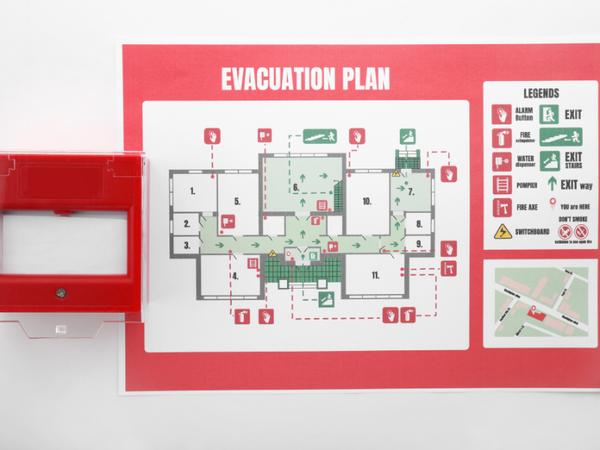
Staying safe is the top priority when an emergency occurs. Knowing what not to do while evacuating helps you avoid danger and keep things running smoothly. Here’s what not to do during an emergency:
Don’t Use Elevators
Elevators might stop working during fires, earthquakes, or power outages. Always take the stairs. It’s not worth the risk.
Don’t Panic
Panicking only makes things worse. Breathe, stay focused, and move calmly.
Don’t Run or Push
Running or pushing in a crowd can cause people to fall and get hurt. It also creates chaos and slows down the evacuation. Walk quickly but stay in control. Everyone wants to get out, but you don’t have to make it harder for others.
Don’t Open Hot Doors
Use the back of your hand to check doors before opening them. If it’s hot, there’s probably fire behind it. Find another exit and warn people about the hot doors.
Don’t Ignore Exit Signs
Follow exit signs even if you know the building. They’re there for a reason and usually mark the safest route out.
Don’t Re-Enter
Once you’re out, stay out. Going back inside is dangerous and could put rescuers at risk, too.
Don’t Block Emergency Responders
Let emergency workers do their job. Stay clear of exits and emergency vehicles.
How to Control an Emergency Evacuation

Controlling an emergency evacuation takes planning, clear communication, and teamwork. It’s not just about getting out of a building. It’s about doing it safely and in an organized way. Here’s how to manage it before, during, and after an emergency:
Before an Emergency
Start by putting together a simple emergency action plan. It should include contact details, escape routes, and a spot where everyone meets up. Make sure it’s easy to read and that everyone knows where to find it. List out any risks in your area, like fires, gas leaks, or flooding, that might lead to an evacuation.
Plan your exits clearly, and always have backups in case the main path isn’t safe. Pick safe meeting spots outside the building where people can check in after leaving. Then, assign trained team members to be evacuation leaders. They’ll guide people, check rooms, and help anyone who might need extra support. Plan for those with disabilities or other needs as well. They’ll need extra help during an emergency.
You can also build basic emergency go bags with water, snacks, a first aid kit, and a flashlight. Lastly, make sure vehicles have fuel and that there’s a backup plan if phones or Wi-Fi go down.
During an Evacuation
Stop everything and start evacuating as soon as an alarm sounds or someone gives the signal. Use the nearest safe exit, follow the exit signs, and take the stairs.
Evacuation wardens should take the lead. They’ll make sure everyone leaves the area, check rooms, and help visitors or anyone who needs support. Once at the meeting point, take a headcount and report anyone missing to the emergency responders.
Then, use the emergency communication system to give updates to those already outside or in other locations. If you see hazards or injuries, report them right away. Keep all paths clear for fire trucks or medical teams as well.
After the Evacuation
Don’t go back inside until emergency personnel say it’s safe. Once things settle down, review how the evacuation went. What worked well? What didn’t? Use that info to update your emergency plan so it improves.
Who Should Be Trained on the Contents of an Emergency Action Plan?
Everyone in the workplace should be trained on the contents of an emergency action plan. If an emergency happens, everyone should know what to do and where to go. This means training should involve employees, supervisors, and rescue teams.
Everyone should also understand the basics, like how to report an emergency, where the emergency exits are, how to evacuate safely, and who to contact for questions.
While everyone needs to know the basics, designated emergency response teams need more detailed training. They’re responsible for leading and helping others, so they need to know the EAP in and out. Managers or supervisors should also be capable of guiding their teams and making quick decisions when things go wrong.
In addition, maintenance workers and contractors who work with hazardous materials need extra training. Meanwhile, new hires should be trained as part of their onboarding, not when they have been working for weeks or months.
While the OSHA only requires people helping with evacuation to be trained, other rules, like the CMS Emergency Preparedness Rule, require everyone to be trained upon hiring and at least once a year after. In short, EAP training should be part of your workplace’s routine, not a one-time thing.
Conclusion
Having an Emergency Action Plan isn’t just a smart move; it’s essential. Emergencies can happen fast, and the better prepared you are, the safer everyone will be. From knowing where to go, who’s in charge, and how to stay calm, a solid plan can save lives. Keep it simple, keep it clear, and keep it practiced. The more you plan ahead, the better you’ll handle whatever comes your way.


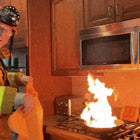 Fire
Fire Safety
Safety Survival
Survival Protection
Protection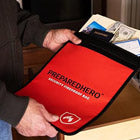 New
New
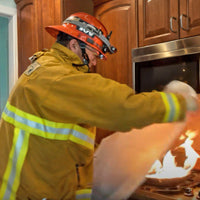 Fire
Fire Safety
Safety Survival
Survival Protection
Protection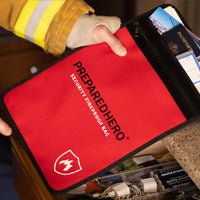 New
New
